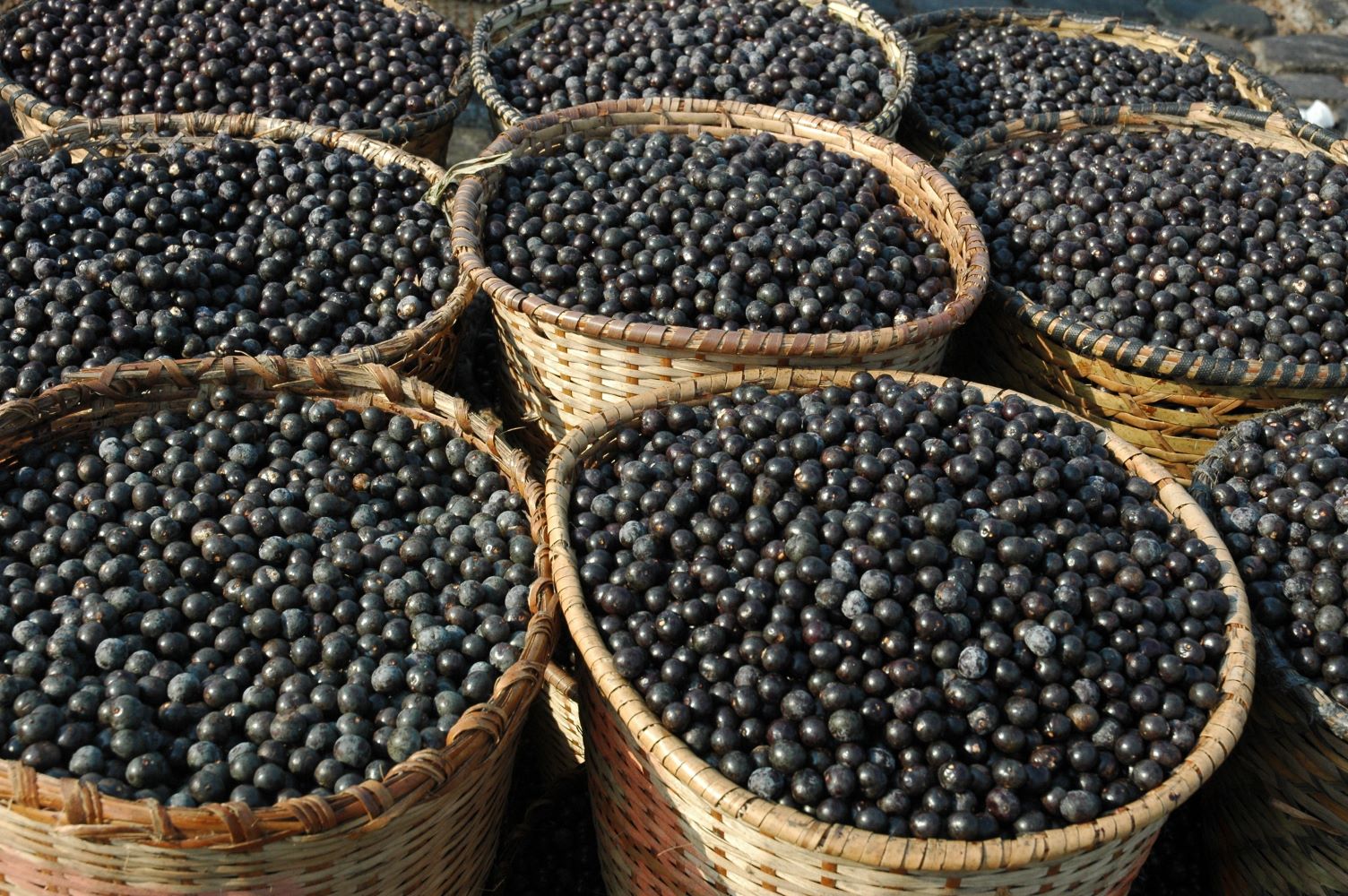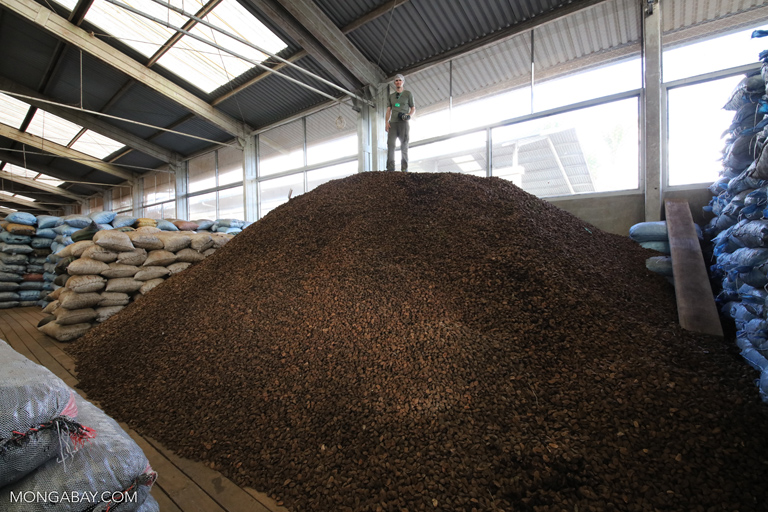- Mongabay is publishing a new edition of the book, “A Perfect Storm in the Amazon,” in short installments and in three languages: Spanish, English and Portuguese.
- Author Timothy J. Killeen is an academic and expert who, since the 1980s, has studied the rainforests of Brazil and Bolivia, where he lived for more than 35 years.
- Chronicling the efforts of nine Amazonian countries to curb deforestation, this edition provides an overview of the topics most relevant to the conservation of the region’s biodiversity, ecosystem services and Indigenous cultures, as well as a description of the conventional and sustainable development models that are vying for space within the regional economy.
- This is part of chapter 1 of “A Perfect Storm in the Amazon,” see the bottom of this page for links to all the excerpts.
The consensus strategy for saving the Amazon is based on a set of five self-reinforcing policies: (1) create protected areas and recognize Indigenous reserves; (2) improve governance to combat illegal activities; (3) increase market demand for deforestation-free commodities; (4) enhance the economic value of forest livelihoods; and (5) generate financial revenues from Payments for Ecosystem Services (PES) schemes to underwrite the implementation of the first four strategic pillars. Two of these policies (3 and 5) rely on macroeconomic incentives, and two (1 and 2) on top-down initiatives emanating from central governments. Only one (4) seeks to change the microeconomics on the forest frontier, and it focuses on a part of the Amazonian economy that does not directly cause deforestation. All of these policies are reliant on REDD+ and, consequently, the development of a robust global carbon market.
This is not an unreasonable expectation. REDD+ provides an opportunity to mitigate global warming as well as alleviate the biodiversity crisis by subsidising policies that are cost-effective, timely and humane. REDD+ has always been viewed as an interim solution that would reduce emissions while the advanced economies, led by the United States, transition to a green economy. Unfortunately, the twenty-year delay in implementing a coherent climate change strategy has made REDD+ a less relevant policy tool.

It is increasingly likely that the Biden administration elected in 2020 will adopt a more aggressive climate change strategy that will reverberate across the global economy. Policies favoured by progressives call for a multi-sector investment and regulatory program that will rapidly transform the domestic economy. In contrast, mainstream economists prefer a fiscally neutral carbon tax that will allow the market to determine which energy systems and technologies prevail.
Neither policy approach envisions a mandatory cap-and-trade system. Moreover, many climate activists view REDD+ as ‘greenwash’ that would delay fundamental changes needed to create a zero-carbon economy, a view reinforced by the uncertainty in the permanence and additionality of forest carbon offsets originating in societies characterised by poor governance.

Considering the large investment made by multilateral development agencies and tropical forest nations, some type of REDD+ mechanism will be implemented. Unfortunately, that system is more likely to remain – as it currently is – a mechanism for channeling overseas development assistance to developing nations combined with a voluntary carbon market used by corporations to offset emissions from fossil fuels. That type of REDD+ system would provide essential support for protected area management and assist Indigenous communities but it will not be sufficient to transform the economy of the Pan Amazon.
The need for a plan B: tree-based production systems
To be truly successful, the transformation of the Amazonian economy will require the wholesale support of the ranchers and smallholders who occupy eighty million hectares (197.6 million acres) of previously deforested land and an approximately equivalent area at risk to future deforestation. Most landholders pursue business models based on deforestation, none of which are particularly productive when viewed from the perspective of energy (carbohydrates) or nutrition (protein). They are, however, economically advantageous when viewed within the timeframes that constrain investment decisions, even when those decisions lead to the eventual degradation of soil resources.
If the economic logic that drives deforestation were reversed – if planting trees were more lucrative than cutting them down – most landholders would happily change their production systems. This supposition is essentially the business model for agroforestry, a tree-based production system targeted at smallholders, and for plantation forestry, a tree-based production system appropriate for larger landholdings.

Both production models have been promoted by extension agents and foresters for decades. The most notable examples of agroforest crops are coffee and cacao, while plantation systems include palm oil and wood fibre (cellulose, charcoal, biofuel or timber). Agroforestry systems are relatively popular among environmental advocates and the smallholders that adopt them. Plantation systems, however, typically attract the wrath of environmental activists because they have been associated historically with large-scale deforestation and are usually predicated on the monoculture of non-native species.
The preferred option of most conservation scientists is the restoration of forest landscapes using native species to recreate natural habitat that would produce, eventually, high-quality hardwood timber species. Unfortunately, that business model has a pay-back time measured in decades, rather than years, and is nonviable without very large subsidies, which presumably would be provided by global carbon markets. In Brazil, environmental advocates contend that landholders will eventually be forced to restore native habitat in order to come into compliance with the Forest Code. Perhaps – but recent history has revealed the social friction associated with that policy pathway, and it certainly will not happen during the administration of Jair Bolsonaro.
Tree-based production systems have the advantage of restoring atmospheric water-recycling functionality to highly fragmented, deforested landscapes. Amazonian producers can be persuaded to adopt tree-based production models, but only if there is a genuine demand for the commodities they produce. Several million hectares of new coffee and cacao plantings would almost surely swamp global commodity markets and destroy the economic incentive for cultivating them. In contrast, the production of wood fibre has a much larger growth pathway, particularly in light of the recent global awakening of the impacts caused by our plastic-based consumer economy. If fossil-fuel derived plastics were replaced by plant fibre, the potential economic opportunity for the Pan Amazon and other tropical forest regions would be enormous.

Tree-based production systems are not without risk, including the potential to displace cattle ranches to the forest frontier and the introduction of exotic species into natural habitats. Displacement risks could be mitigated using the same set of five policy options described above, while the risk from invasive species could be avoided by using mixed plantings of native species, of which there are literally thousands of prospective candidates. The pursuit of tree-based production systems based on a commodity with a global market represents yet another macroeconomic solution, but one using a business model that responds to the microeconomic challenges and social obstacles that have stymied current policies.
The Pan Amazon is a big, complicated region, and no single policy package will resolve the conundrum of reconciling nature conservation and economic development. Many, perhaps all, solutions will need to be local or regional in nature. Even the macroeconomic and top-down models favoured by policy specialists will need to be implemented in the context of geographically specific circumstances. This book attempts to lay these issues out in a systematic and logical narrative to facilitate the discovery of a pathway through a perfect storm of environmental mayhem to a sustainable future for the Pan Amazon and all of its inhabitants.
“A Perfect Storm in the Amazon” is a book by Timothy Killeen and contains the author’s viewpoints and analysis. The second edition was published by The White Horse in 2021, under the terms of a Creative Commons license (CC BY 4.0 license).
Read the other excerpted portions of chapter 1 below or jump to chapter 2 here:
 Chapter 1. The state of the Amazon
Chapter 1. The state of the Amazon
- The state of the Amazon May 31, 2023
- Drivers of environmental degradation in the Amazon June 1, 2023
- The geography of environmental degradation in the Amazon June 7, 2023
- The political economy of the Pan Amazon June 8, 2023
- Understanding the conventional economy of the Pan Amazon June 13, 2023
- The natural history of the Amazon Rainforest June 14, 2023
- Forest ecology and carbon dynamics in the Amazon June 20, 2023
- Climate change and moisture recycling in the Amazon June 22, 2023
- Environmental policy and action on the ground in the Amazon June 27, 2023
- Environmental governance in the Amazon June 28,2023
- The largest land set-aside in history June 29, 2023
- An Indigenous revival in the Pan Amazon July 6,2023
- Monetizing nature: The under-explored power of the Amazon’s natural capital July 7, 2023
- The challenge of the future (and lessons from the recent past) in the Pan Amazon July 12, 2023
- Current policy approaches in the Amazon: certainly necessary, but are they sufficient? July 13, 2023
